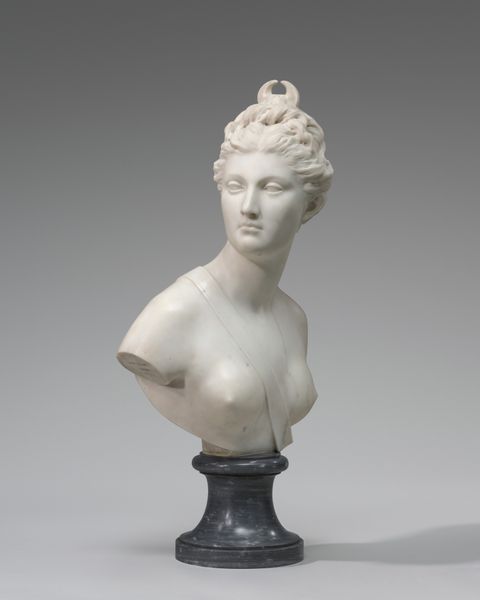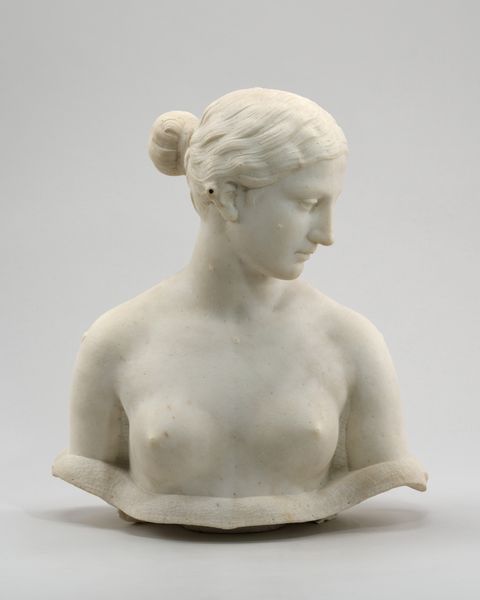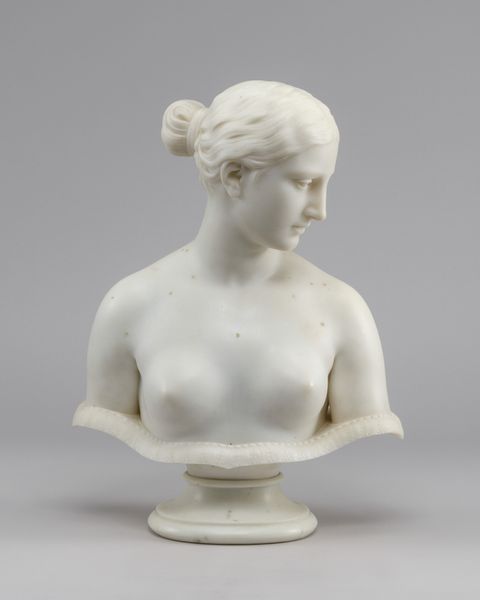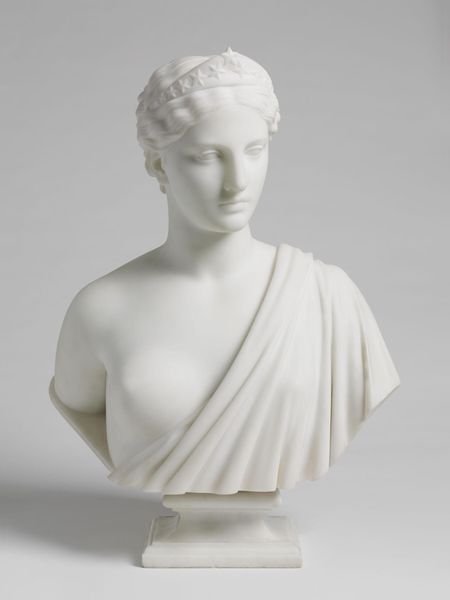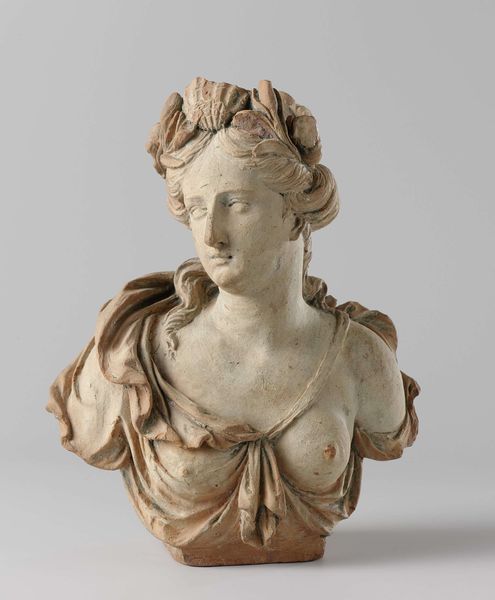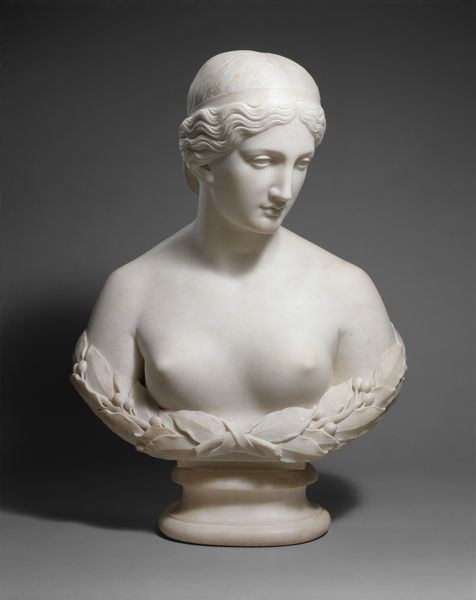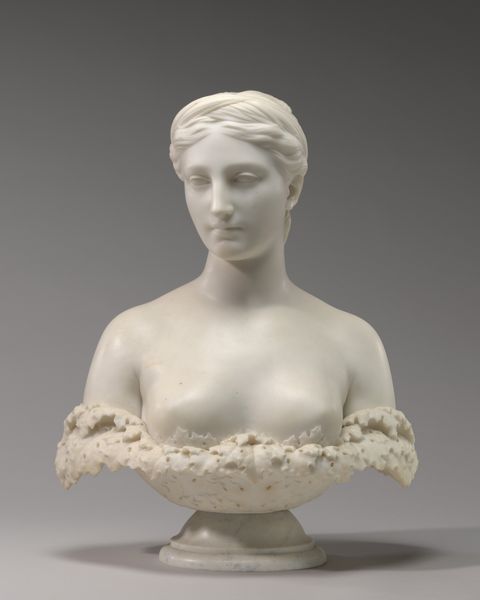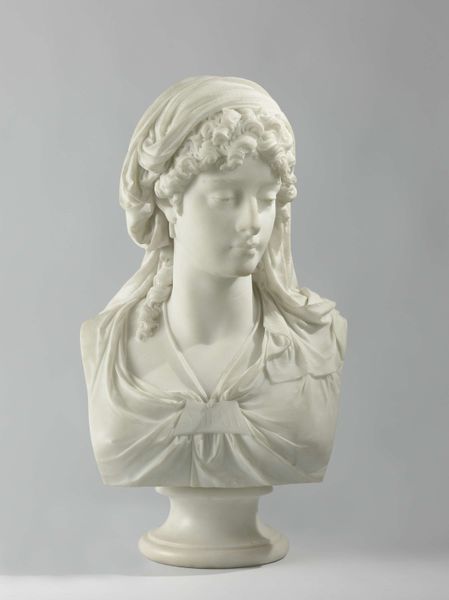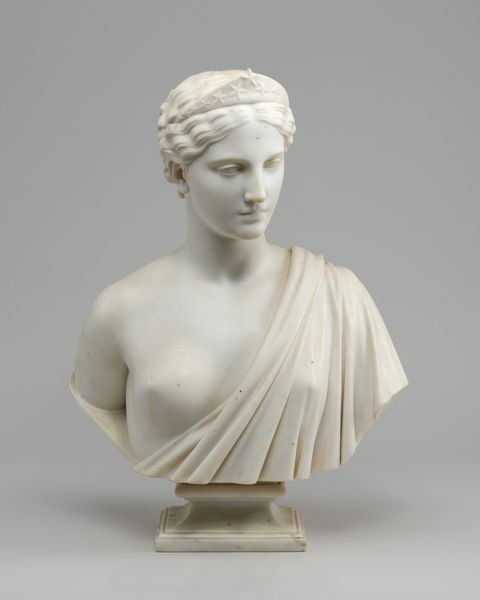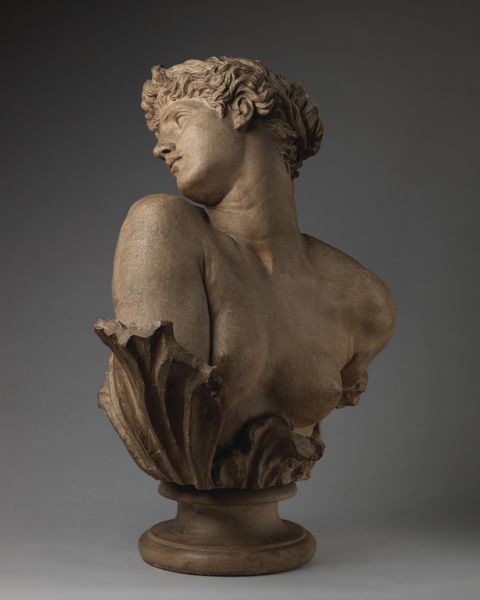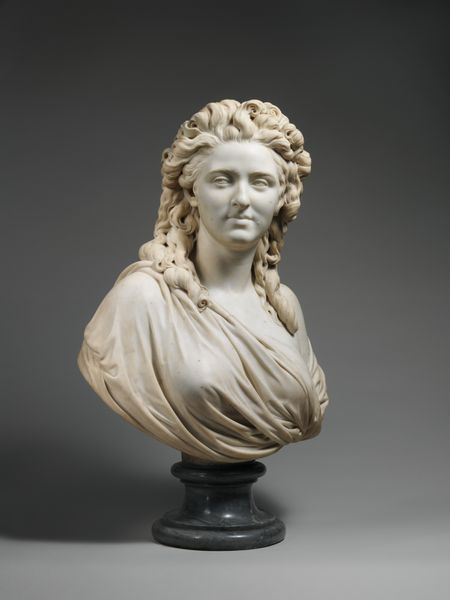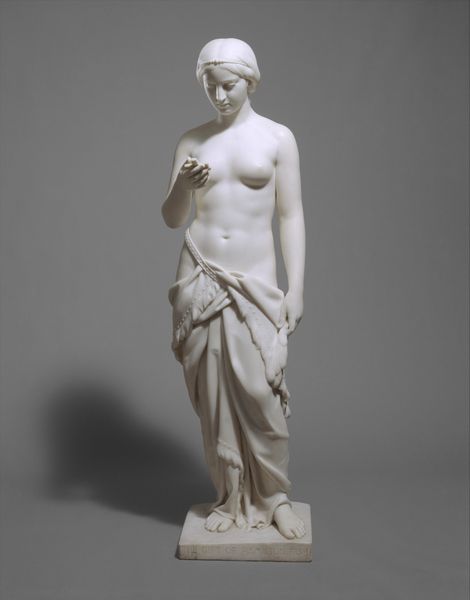
sculpture, marble
#
portrait
#
neoclacissism
#
figuration
#
sculpture
#
marble
Dimensions: 27 1/4 x 21 x 9 1/2 in. (69.22 x 53.34 x 24.13 cm)
Copyright: Public Domain
Harriet Hosmer carved this marble bust of Medusa in Rome, where she lived as part of a community of expatriate artists. Hosmer was one of many women sculptors working in Italy at this time, and their presence there challenged social norms about gender and artistic production. Unlike painters, sculptors needed workshops and assistants to produce large-scale works, so the women who succeeded in this field had to build alternative institutional structures. Hosmer and her colleagues did this by creating their own networks of patronage and support. Here, she presents Medusa, not as a fearsome monster, but as a beautiful and tragic figure. This interpretation of the mythological character reflects a broader cultural interest in the psychological states of women. We can understand this artwork better by researching the lives and careers of women sculptors in 19th-century Rome, and by exploring the changing representations of Medusa in art and literature. Art is always contingent on social and institutional context.
